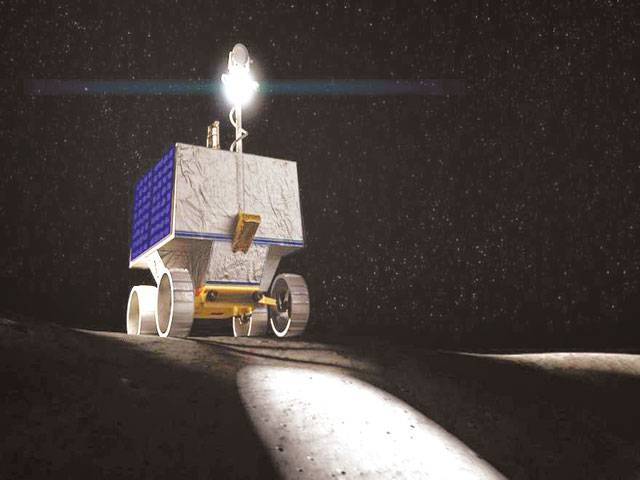WASHINGTON-WASHINGTON — NASA Administrator Jim Bridenstine announced Oct. 25 that the agency would send a robotic rover to the moon in 2022 to look for water ice, confirming plans that had been taking shape for months.
In a speech at the 70th International Astronautical Congress, Bridenstine said the Volatiles Investigating Polar Exploration Rover (VIPER) mission would look for ice on or below the surface of the moon at its south pole, a key resource for future human missions.
“We actually have a mission right now that I’m very pleased to announce, it’s called VIPER,” he said. VIPER would fly to a moon on a commercial lander through the agency’s Commercial Lunar Payload Services (CLPS) program.
“VIPER is going to rover on the south pole of the moon and VIPER is going to assess where the water ice is,” he continued. “We’re going to characterize the water ice, and ultimately drill and find out just how the water ice is embedded in the regolith on the moon.”
Bridenstine and others have long trumpeted the presence of potentially hundreds of millions of tons water ice on the moon as a key reason human missions should go to the lunar poles. However, there’s little “ground truth” about that water ice, including exactly where it is located and in what concentrations, as well as how difficult it would be to extract that water ice.
The $250 million VIPER mission would launch in late 2022 and operate at the south pole of the moon for 100 days. The rover will use a neutron spectrometer to detect potential ice deposits below the surface, then access them with a drill than can go as deep as one meter into the surface. Subsurface samples retrieved by the drill would then be examined by a mass spectrometer and near-infrared spectrometer.
“It’s incredibly exciting to have a rover going to the new and unique environment of the south pole to discover where exactly we can harvest that water,” said Anthony Colaprete, VIPER project scientist, in a NASA statement. “VIPER will tell us which locations have the highest concentrations and how deep below the surface to go to get access to water.”
While Bridenstine announced the mission in that speech, agency officials have been discussing plans for VIPER in industry forums for several months. The rover is intended to be part of a “mobility strategy” for lunar exploration, Steve Clarke, deputy associate administrator for exploration in NASA’s Science Mission Directorate (SMD), said at the NASA Exploration Science Forum in July.
Tuesday, April 16, 2024
NASA confirms plans to send prospecting rover to the moon

-GN
3:56 PM | March 28, 2024
4:14 PM | March 23, 2024
IHC dismisses Bushra Bibi's plea seeking her shifting to Adiala Jail from Bani Gala
4:25 PM | April 16, 2024
Punjab CM visits Tehsil Headquarter Hospital Murree
3:25 PM | April 16, 2024
High-level Saudi delegation in Islamabad to hold meetings with Pakistani leadership
2:07 PM | April 16, 2024
Saudi foreign minister meets PM Shehbaz Sharif
1:17 PM | April 16, 2024
Decision to retaliate against Iran attacks rests with Israel, says Pentagon
1:05 PM | April 16, 2024
Political Reconciliation
April 16, 2024
Pricing Pressures
April 16, 2024
Western Hypocrisy
April 16, 2024
Policing Reforms
April 15, 2024
Storm Safety
April 15, 2024
Democratic harmony
April 16, 2024
Digital dilemma
April 16, 2024
Classroom crisis
April 16, 2024
Bridging gaps
April 16, 2024
Suicide awareness
April 15, 2024
ePaper - Nawaiwaqt
Advertisement
Nawaiwaqt Group | Copyright © 2024





